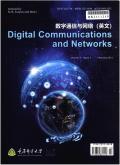Reducing the Computational Cost of Bayesian Indoor Positioning Systems
IF 7.5
引用次数: 13
Abstract
In this work we show how to reduce the computational cost of using Bayesian networks for localization. We investigate a range of Monte Carlo sampling strategies, including Gibbs and Metropolis. We found that for our Gibbs samplers, most of the time is spent in slice sampling. Moreover, our results show that although uniform sampling over the entire domain suffers occasional rejections, it has a much lower overall computational cost than approaches that carefully avoid rejections. The key reason for this efficiency is the flatness of the full conditionals in our localization networks. Our sampling technique is also attractive because it does not require extensive tuning to achieve good performance, unlike the Metropolis samplers. We demonstrate that our whole domain sampling technique converges accurately with low latency. On commodity hardware our sampler localizes up to 10 points in less than half a second, which is over 10 times faster than a common general-purpose Bayesian sampler. Our sampler also scales well, localizing 51 objects with no location information in the training set in less than 6 seconds. Finally, we present an analytic model that describes the number of evaluations per variable using slice sampling. The model allows us to analytically determine how flat a distribution should be so that whole domain sampling is computationally more efficient when compared to other methods降低贝叶斯室内定位系统的计算成本
在这项工作中,我们展示了如何减少使用贝叶斯网络进行定位的计算成本。我们研究了一系列蒙特卡罗采样策略,包括吉布斯和大都会。我们发现,对于我们的吉布斯采样器,大部分时间都花在切片采样上。此外,我们的结果表明,尽管整个域的均匀采样偶尔会遭受拒绝,但它的总体计算成本要比小心避免拒绝的方法低得多。这种效率的关键原因是我们的定位网络中完整条件的平坦性。我们的采样技术也很有吸引力,因为它不需要大量的调优来实现良好的性能,不像Metropolis采样器。我们证明了我们的整个域采样技术具有低延迟和准确的收敛性。在商用硬件上,我们的采样器在不到半秒的时间内定位了多达10个点,这比普通的通用贝叶斯采样器快10倍以上。我们的采样器也可以很好地扩展,在不到6秒的时间内定位了训练集中没有位置信息的51个对象。最后,我们提出了一个分析模型,该模型描述了使用切片抽样的每个变量的评估次数。该模型允许我们分析确定分布应该有多平坦,以便与其他方法相比,整个域采样的计算效率更高
本文章由计算机程序翻译,如有差异,请以英文原文为准。
求助全文
约1分钟内获得全文
求助全文

 求助内容:
求助内容: 应助结果提醒方式:
应助结果提醒方式:


